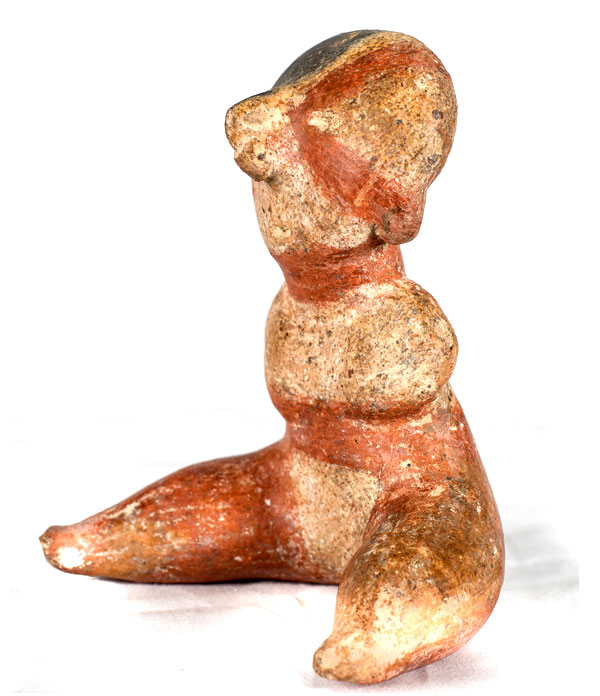Nayarit Chinesco Figure
Origin: Western Mexico
Height:
Circa: 300 B.C. - 300 A.D.
Materials: Terra-cotta, pigment
Provenance: I.M. Chait Gallery/Auction Beverly Hills,CA
Price on request
The Western Mexico shaft tomb tradition or shaft tomb culture refers to a set of interlocked cultural traits found in the western Mexican states of Jalisco, Nayarit, and, to a lesser extent, Colima to its south, roughly dating to the period between 300 BCE and 400 CE. "Chinesca" or "Chinesco" figurines were named by art dealers after their supposed Chinese-like appearance. An early type, Chinesco is identified with Nayarit and up to five major subgroups have been identified, although there is considerable overlap.Type A figurines, the so-called "classic Chinesco",are realistically rendered. One prominent curator, Michael Kan, finds that "their calm, subtle exterior suggests rather than demonstrates emotion".These Type A figures are so similar to one another that it has been suggested that they were the production of a single "school".Types B through E are more abstract, characterized by puffy, slit-like eyes blended into the face, and broad rectangular or triangular heads. These figures are often shown seated or reclining, with shortened bulbous legs quickly tapering to a point such as this example. |


